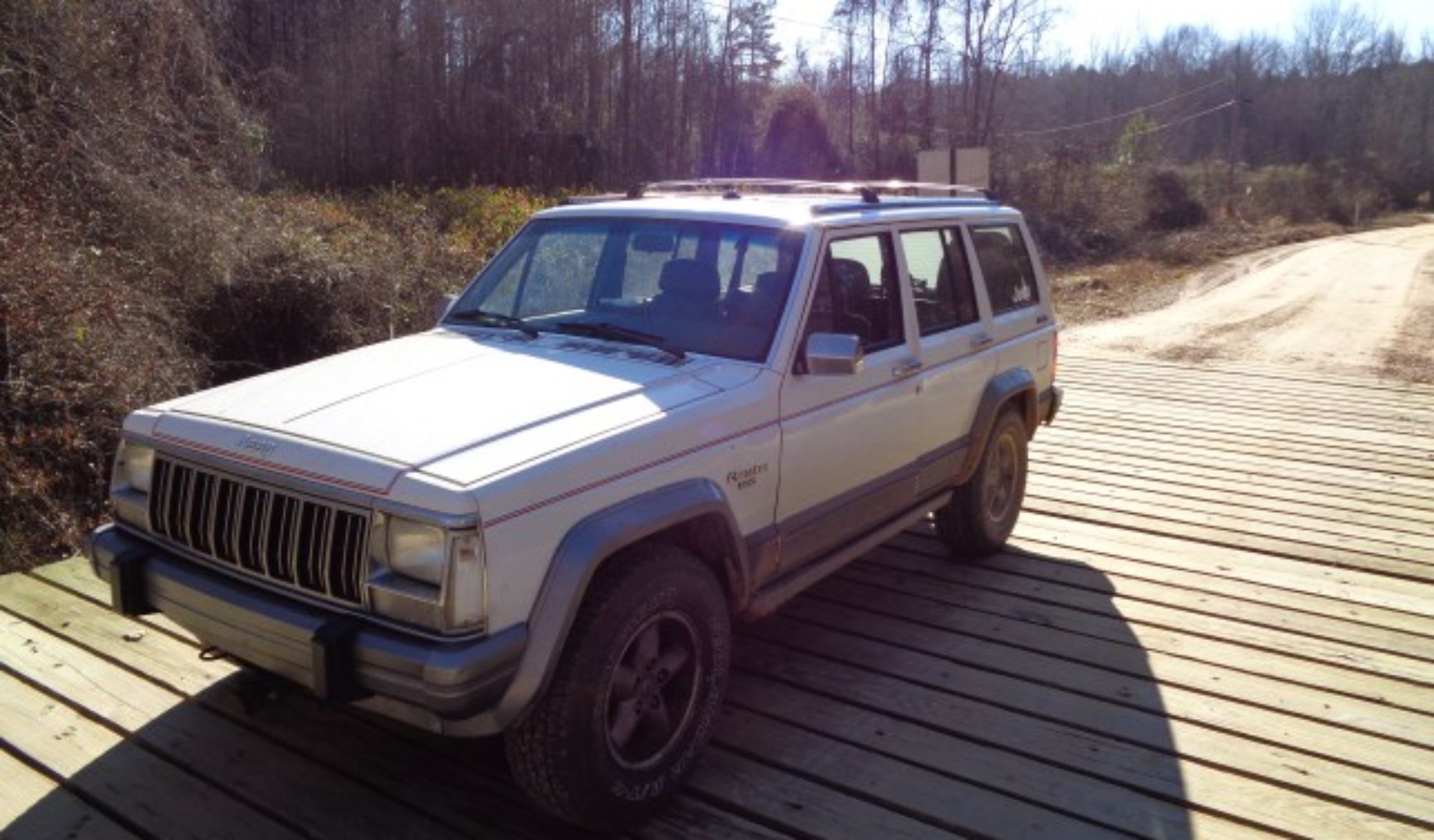The Jeep Dana 30 axle will hold up under most conditions, but when you start adding larger tires and lockers as well as driving in more rugged terrain, there is always a chance something might break. Having the right tools and spare parts on board can save the day. A broken axle shaft or U-joint can be changed on the trail in about 20 minutes providing you are properly prepared.
Things you will need include; a jack, a spare shaft, a 13mm twelve point socket or wrench, a 36MM socket and something to turn it. You will also need the appropriate tools to remove your wheel and brake caliper. These vary from year to year and depending on your accessories. A hammer and a spare set of hub bolts will be helpful as well.
If your wheels have open centers, begin by removing the cotter key and the center nut on the axle shaft. This nut is very tight when tightened to specs. You will need either an impact wrench if you have on-board air or a long handled pull bar on the socket. If you have a closed center wheel, you will have to remove the wheel and have someone hold the brake while you loosen the nut.
Support the vehicle and remove the wheel. Remove the brake caliper and support it on the control arm. Try not to let it hang by the hose. Next, remove the brake rotor.

Using a 13mm 12 point socket, remove the three bolts that hold the bearing to the knuckle. The bearing will likely be stuck in the knuckle. My favorite way of removing it is to screw in some disposable bolts that have the same thread and hammer on the bolt heads. Once you hit the bolt head with a hammer, you will not be able to put a wrench on them in the future. I carry a set of bolts for this purpose in my axle repair kit.
If you don’t have spare bolts, you can still tap the bearing out using a hammer and pry bar. Try not to hit on the wheel mounting flange however as this can damage the bearing.

Slip the bearing out and then remove the broken shaft. If part of the shaft remains in the axle housing, use a magnet to remove it. If you can not pull it out with a magnet, you can also remove both shafts and push it out with a stick or long metal rod.
If you have jacked up the side you are working on high enough, you will not spill any axle grease. Even with it level, there should only be a small loss.

Slip in the spare shaft and check for any other damage. Put the bearing back in place and secure the three bolts. Place the rotor back on the hub and secure the brake caliper. Mount the wheel then tighten the center axle nut. Replace the retainer clip and cotter key.
Pump the brake pedal a couple of times to remove any slop that may have been introduced by removing the caliper before attempting to move the Jeep. Now get back to wheeling!
[phpbay]jeep axle, 10[/phpbay]
